Over and Over and Over
Sophia Wallace
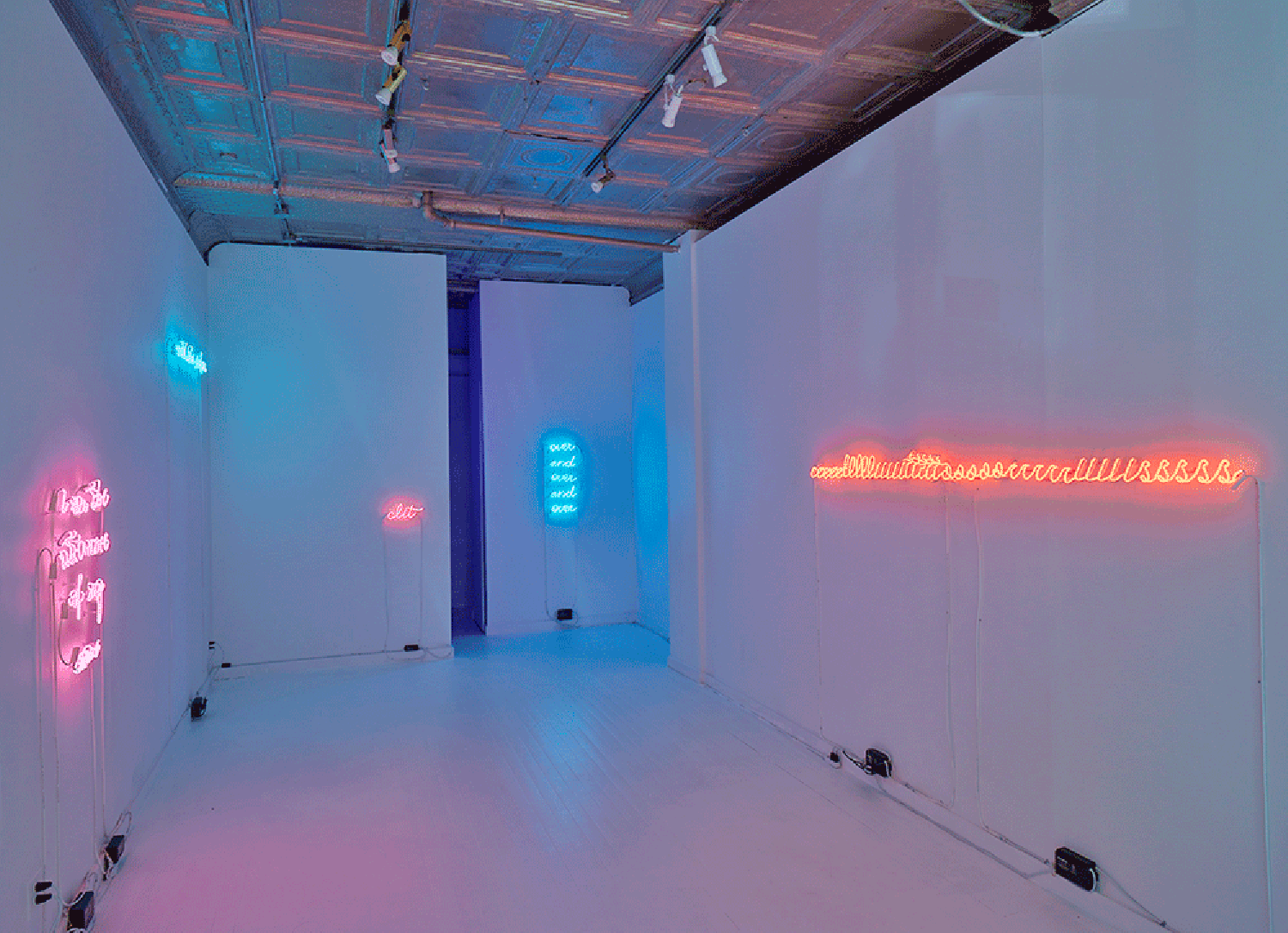
Installation View
Sophia Wallace
Over and Over and Over, 2016
New York, NY
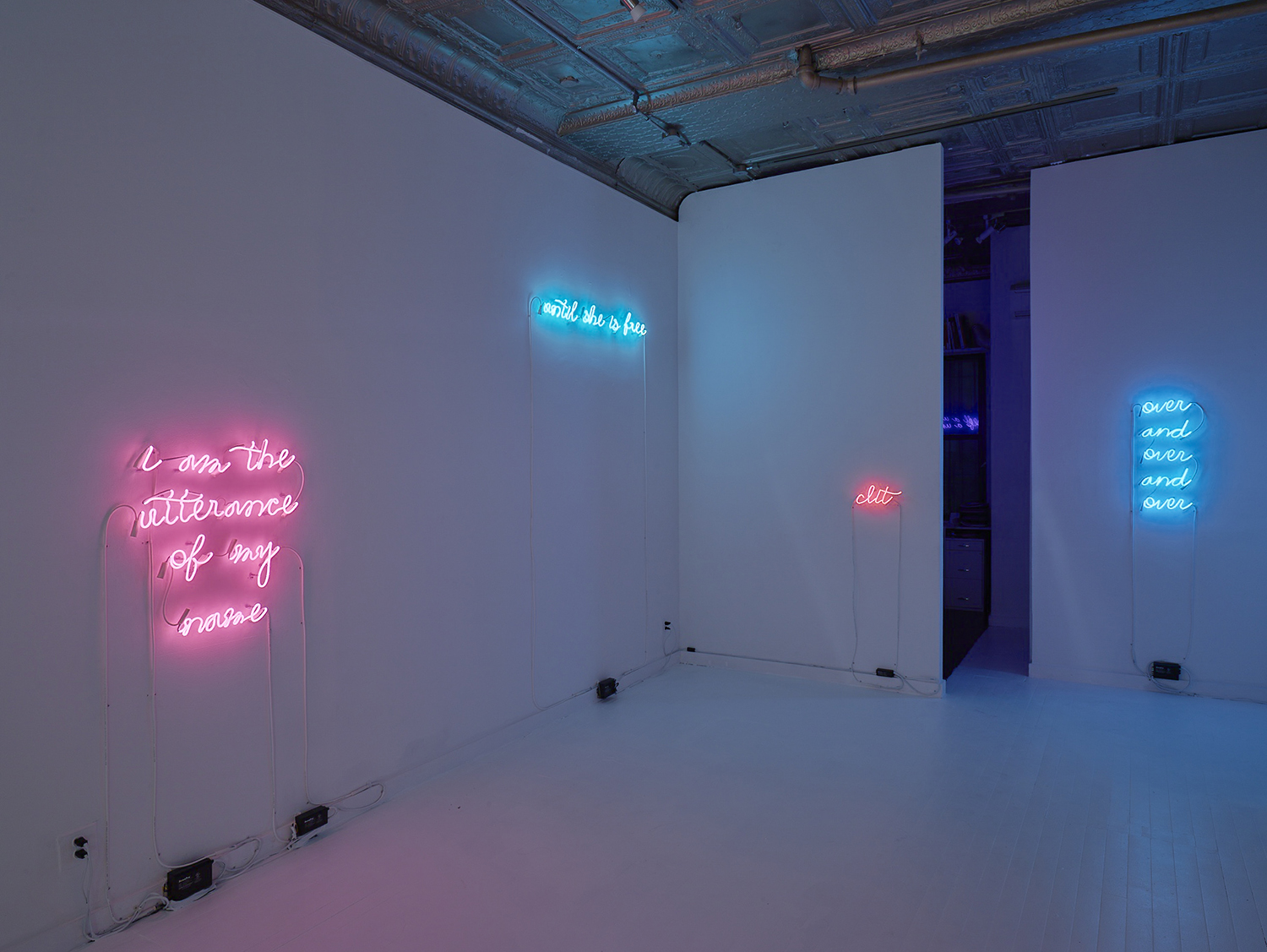
Installation View
Sophia Wallace
Over and Over and Over, 2016
New York, NY
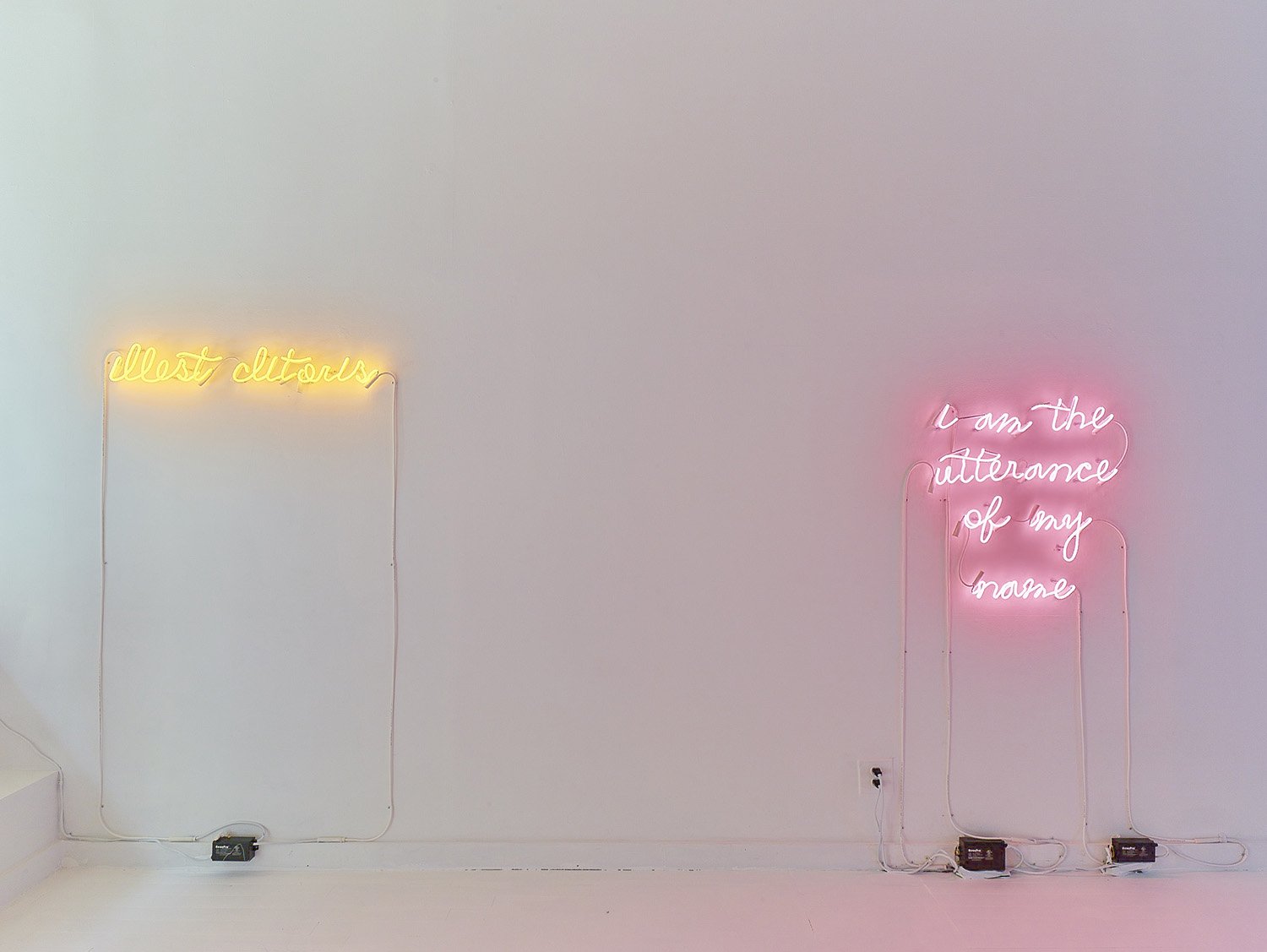
Installation View
Sophia Wallace
Over and Over and Over, 2016
New York, NY
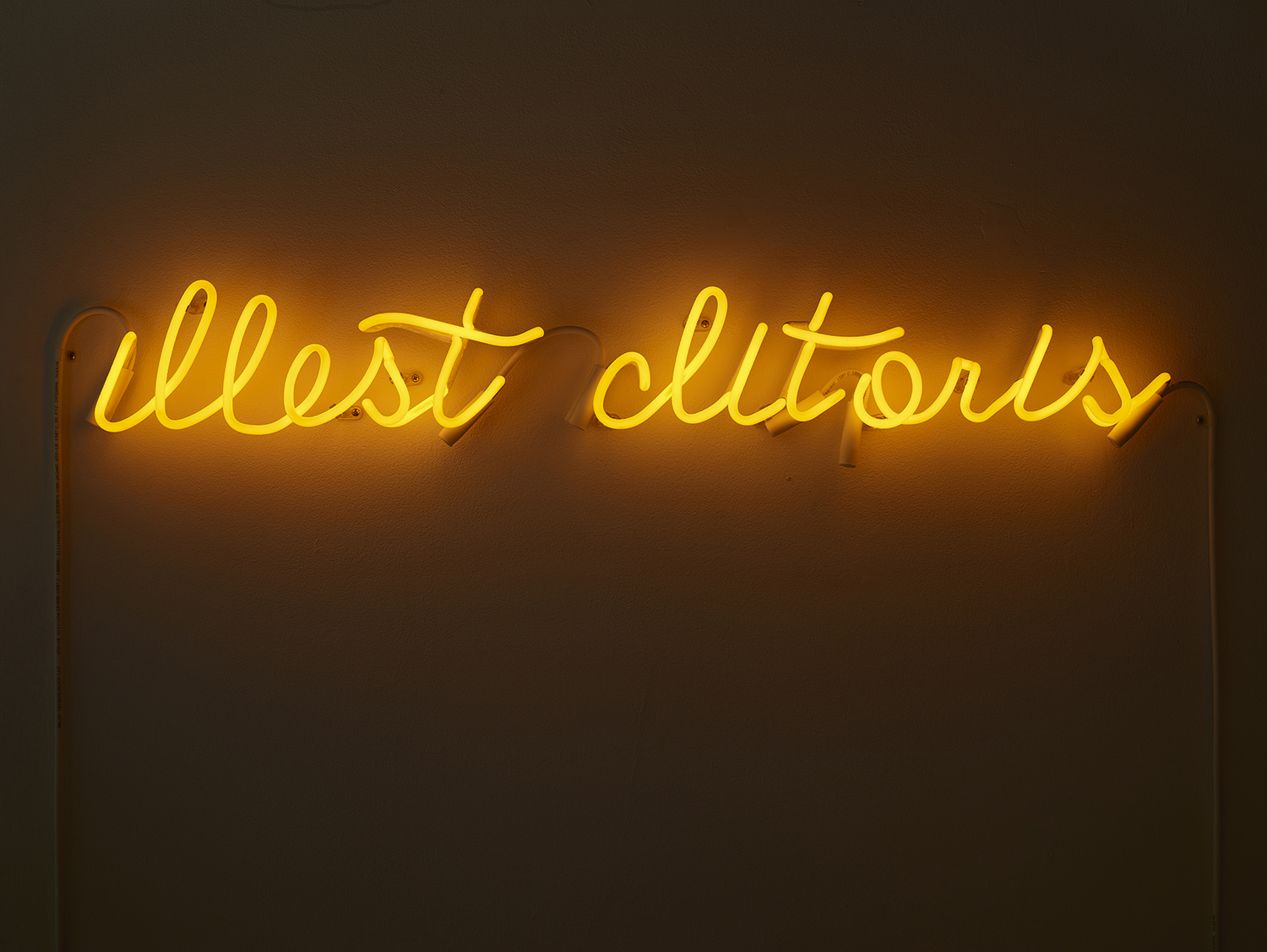
Installation View
Sophia Walllace
Over and Over and Over, 2016
Swagga Like Us, 2016
New York, NY

Installation View
Sophia Wallace
Over and Over and Over, 2016
New York, NY
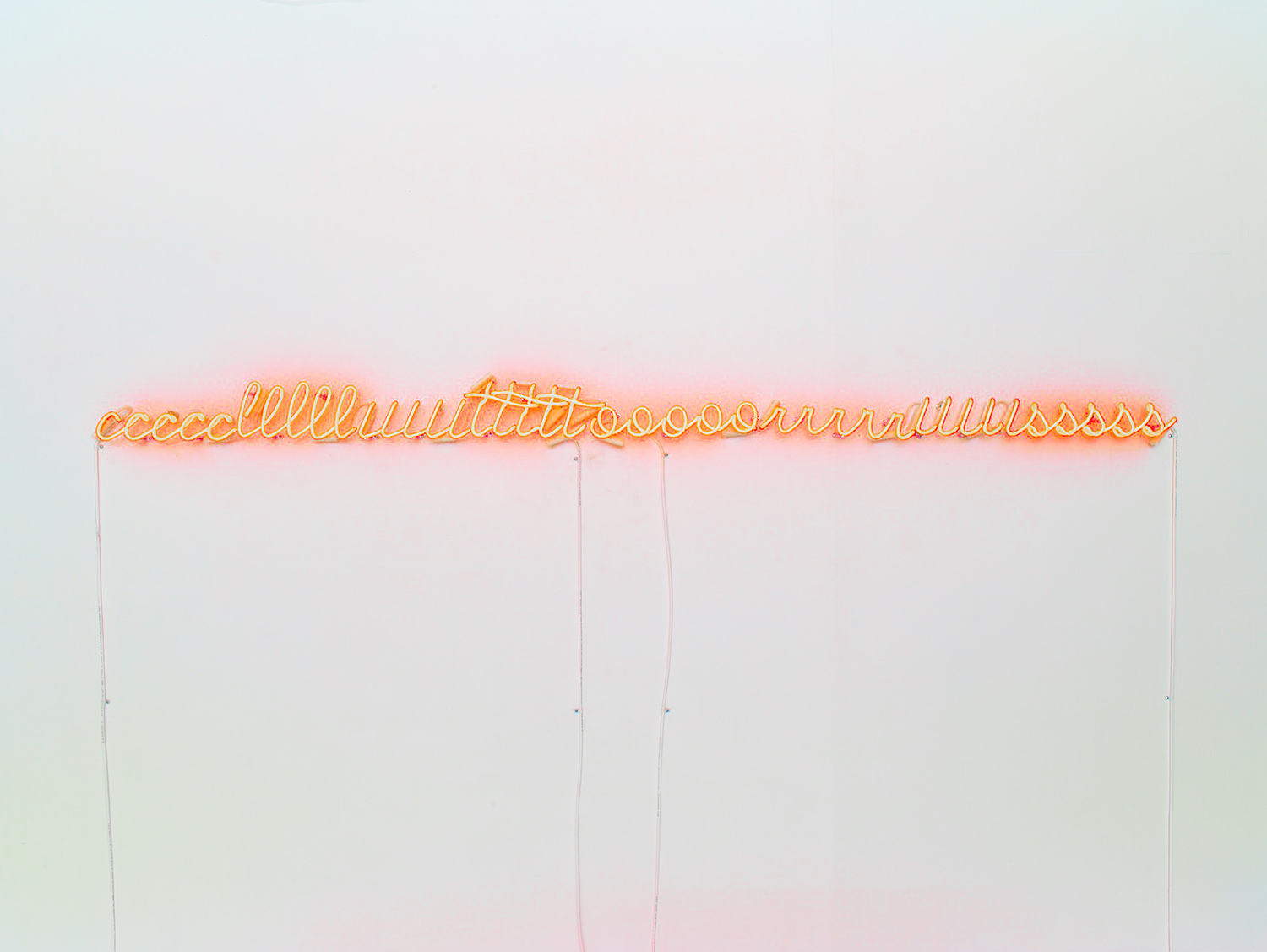
Installation View
Sophia Wallace
Over and Over and Over, 2016
My Name On the Surface of a Lost Star, 2016
New York, NY
New York, May 20, 2016 – Truth told once is no match for a lie oft repeated. – James Rozoff
CATINCA TABACARU GALLERY is proud to announce OVER AND OVER AND OVER, a solo exhibition by Sophia Wallace. The show debuts a new body of work of illuminated text sculptures in neon. The exhibition continues Wallace’s exploration of how power shapes our knowledge of the body and social relations. It is grounded within legacies of conceptual art and intersectional feminist and queer theory.
Themes incisively explored include:
⚡ Aestheticizing a vision of liberation, for the body diminished through gender and sex.
⚡ The power of the small, the so-called weapons of the “weak”.
⚡ The diminished subject as the source of illumination, humble yet so vibrant it colors the whole room.
⚡ Repetition, a gesture of necessity. As long as the subject remains absent in representation, it must be repeated in form and speech, again and again, until it is naturalized.
Like the clitoris, the neon works are small yet powerful, illuminating themselves and the space – physical and metaphysical – around them. Ideas long kept in the shadows of ignorance, taboo, and active censorship are made visible. The works enact a conceptual provocation to phallic symbolo-gy; like dangerous truths scrawled on a bathroom wall, they are not permitted public legitimacy and so bend, shrink and appear only in constricted space. Here, through texts that aestheticize realiza- tion of liberation by the abject body, Wallace addresses a future where self-determination, female brilliance and embodied joy are realized.
Wallace is in conversation with cultural, philosophical and spiritual sources. She came of age in the golden era of hip-hop. In Swagga Like Us, Wallace nods in the title to rapper M.I.A. and in the text to Christopher Wallace aka The Notorious B.I.G. Remixing his à propos lyric ‘Biggie {clit-y} Smalls is the Illest.” Since the beginning of Hip-Hop, MCs have brilliantly met racism and misogyny with powerful lyrics of self-recognition. In this work, the speaker is aware that it is perceived through a lens of fear and censorship. Wallace irreverently co-opts masculine swagger to proclaim the dopeness of the clitoris. The largest work of the exhibition, My Name On the Surface of a Lost Star (2016) exists in dialogue with Bruce Nauman’s My Name as Though It Were Written on the Surface of the Moon (1968) and Glenn Ligon’s Impediment (2007). The text “cccccllllliiiiitttttooooorrrrriiiiisssss” invites sonic invoca- tion, addressing as Ligon does with ‘sssslllluuuurrrr’ that it is often “called names.” Rarely seen in print or heard in speech, the piece sounds itself knowing that many are so unaccustomed to en- countering it in language that they struggle with pronunciation of the word. Wallace’s My Name contrasts itself to Nauman’s by juxtaposing the fact that it was not until 1998, 29 years after Neil Armstrong walked on the surface of the moon, that the complete anatomy of the clitoris was finally “discovered” in Western Medicine by Australian Urolgoist, Dr. Helen O’Connell.
I Am the Utterance of My Name (2016) is derived from an excerpt of The Thunder, Perfect Mind, an ancient Gnostic manuscript on the divine feminine dating between first century BCE to the third century CE. Discovered in Egypt in 1945, no other Christian text from ancient times speaks from the first person as a multi-gendered, primarily female God. The text uses constant paradox as a rhetorical device to disrupt a hostile audience who does not respect its authority. The divine voice in The Thunder presents itself as simultaneously so glorious yet utterly humiliated.
Until it is known, I will say it OVER AND OVER AND OVER
Until it is seen, I will create it OVER AND OVER AND OVER
Until it is present, I will invoke it OVER AND OVER AND OVER